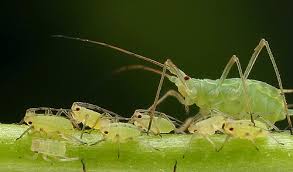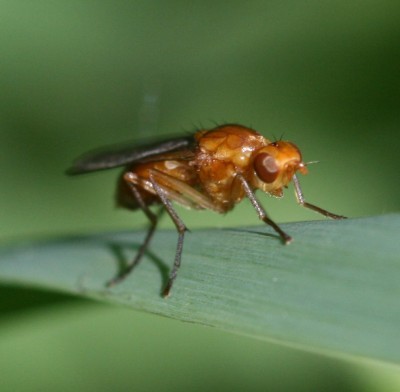What Do Commercial Landscapers Actually Do?
 Landscaping can address aesthetics, air quality, biodiversity, local food production, water management, climate modification, and habitat creation. It can also help cool and warm your property.
Landscaping can address aesthetics, air quality, biodiversity, local food production, water management, climate modification, and habitat creation. It can also help cool and warm your property.
Benefits of Commercial Landscaping
Commercial property owners can greatly benefit from commercial landscaping, which is a complete landscaping service that will include planning, designing, installation and maintenance of landscapes for both small and big businesses.
Studies have shown that with a well-maintained landscape, your business can attract new clients. Also, this will boost worker productivity. Investing in attractive landscaping is a great way of showing your ecological values to your customers. Let your customers know you are doing so by installing native plants and watering gardens, and using sustainable hardscape materials. Advocating the use of earth-friendly practices is also a smart move.
Sustainable Landscaping
Sustainable landscaping refers to designing and constructing the landscape around the building and enhancing the natural landscapes. It means putting back much of what might have been in place prior to development. It also means presenting things that weren’t there before to make sure that the landscape is economical and eco-friendly.
Plants that perform well in the area are very crucial. Sustainable plants include native and indigenous plants. Native plants are those from Australia while indigenous plants are those specific to a certain place. Ideally, these plants must perform well even without the need for soil modification, excessive watering, and thorough maintenance regimes.
What Can Commercial Landscapers Do
Commercial landscapers do more than just mowing the lawn.
First, they can help you plan as well as install an inviting workplace frontage based on your set budget.
Second, they can see what must be done so that your business is always looking its best.
Lastly, they can offer seasonal or regular maintenance services for mowing, trimming, plant replacement, pruning, and weeding.
Characteristics Commercial Landscapers Must Have
- Excellent communication skills – They must contact you through email or phone regularly and always inform you of what must be done and how long it will take.
- Proactive – They must anticipate possible landscape problems and opportunities.
- Transparent – The invoices they give you must be clear and understandable. They must clearly show where your hard-earned money is going.
- Experienced – They must have plenty of years of experience when it comes to performing commercial landscaping. Check the properties they have landscaped before.
- Resourceful – They reuse existing site materials, like excavated rocks. Also, they use recycled materials like crushed concrete and recycled glass wherever possible.
There are no such things as maintenance-free landscapes. Everything created artificially for human purposes will require on-going maintenance. And this means investing in commercial landscaping services.
For more garden and landscaping tips, tune in for more Jim’s Mowing NZ blogs.


 There are many kinds of gardens. The sub-urban small garden, the larger country garden, the city-backyard, the terrace, and the penthouse garden. There are also special gardens that aim to further enhance the aesthetic value of a property. Whatever kind of garden you want to achieve, it much depends on the gardening contractors that you will hire.
There are many kinds of gardens. The sub-urban small garden, the larger country garden, the city-backyard, the terrace, and the penthouse garden. There are also special gardens that aim to further enhance the aesthetic value of a property. Whatever kind of garden you want to achieve, it much depends on the gardening contractors that you will hire. There are plenty of insects that can infest your garden in winter; some are beneficial while some are destructive. Luckily, you can get rid of them with simple solutions. Here is a list of
There are plenty of insects that can infest your garden in winter; some are beneficial while some are destructive. Luckily, you can get rid of them with simple solutions. Here is a list of
 Caterpillars
Caterpillars Stink bugs can typically be found in New South Wales and Queensland. They are considered a pest to all citrus trees. They appear in late winter as lime green nymphs, but as they grow, they turn into an orange to bronze colour. When controlling these pests, you must be very careful since they emit a foul-smelling liquid that burns the eyes and skin on contact.
Stink bugs can typically be found in New South Wales and Queensland. They are considered a pest to all citrus trees. They appear in late winter as lime green nymphs, but as they grow, they turn into an orange to bronze colour. When controlling these pests, you must be very careful since they emit a foul-smelling liquid that burns the eyes and skin on contact. Perform supplementary hand watering in the morning to allow the leaves to dry during the day.
Perform supplementary hand watering in the morning to allow the leaves to dry during the day. Use the leaves as compost
Use the leaves as compost Turn the pile over a few times as you let it sit for about a year.
Turn the pile over a few times as you let it sit for about a year. Autumn is a time for great changes; everyone can experience cooler nights and the transformation of outdoor scenery.
Autumn is a time for great changes; everyone can experience cooler nights and the transformation of outdoor scenery.





 How should you control weeds?
How should you control weeds? Use special weeders for deep-rooted weeds.
Use special weeders for deep-rooted weeds.
